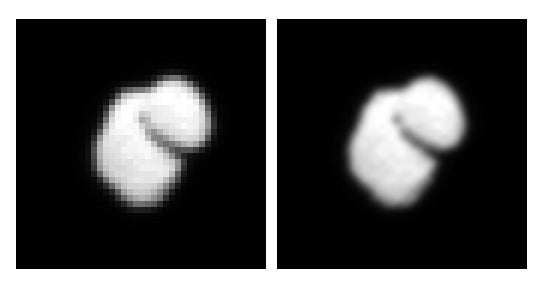Since The Euopean Space Agency’s (ESA) space probe Rosetta arrived at Comet 67P in August, the scientific camera system OSIRIS has mapped most of its surface, revealing stunning structures such as steep ravines, sharp cliffs, and numerous boulders. Comet 67P’s southern side, however, is still a mystery. As the comet’s rotation axis is not perpendicular to its orbital plane, but is tilted, parts of its surface can at times remain in total darkness. During the past months, the comet’s southern side has seen such a polar night, comparable to the weeks of complete darkness at Earth’s polar regions.
At the same time, the comet’s dark side promises to hold the key to a better understanding of the comet’s activity. “During perihelion, when the comet comes within approximately 186 million kilometers [116 million miles] of the Sun, the comet’s southern side is illuminated and thus subjected to especially high temperatures and radiation,” said OSIRIS Holger Sierks from the Max Planck Institute for Solar System Research in Germany. Scientists therefore believe this side to be shaped most strongly by cometary activity. “We can hardly wait until May 2015 when the polar night ends, and we can finally take a good look,” said Sierks.
Until then, a recent image offers a first taste of what will come. In this image, sunlight backscattered from dust particles in the comet’s coma illuminates the comet’s dark side, revealing a hint of surface structures.
“For a normal camera, this tiny bit of scattered light would not help very much,” said Maurizio Pajola from the Center of Studies and Activities for Space at the University of Padua in Italy who first spotted the amazing image. Unlike standard cameras that encode information in 8 bits per pixel and can thus distinguish between 256 shades of gray, OSIRIS is a 16-bit-camera. This means that one image can comprise a range of more than 65,000 shades of gray — much more than a standard computer monitor can display. “In this way, OSIRIS can see black surfaces darker than coal together with white spots as bright as snow in the same image,” said Pajola.
Scientists from the OSIRIS team exploit this high dynamic range not only to peer into the total darkness of Comet 67P’s polar night, but also to gather information from regions that are only temporarily shaded in certain images.










